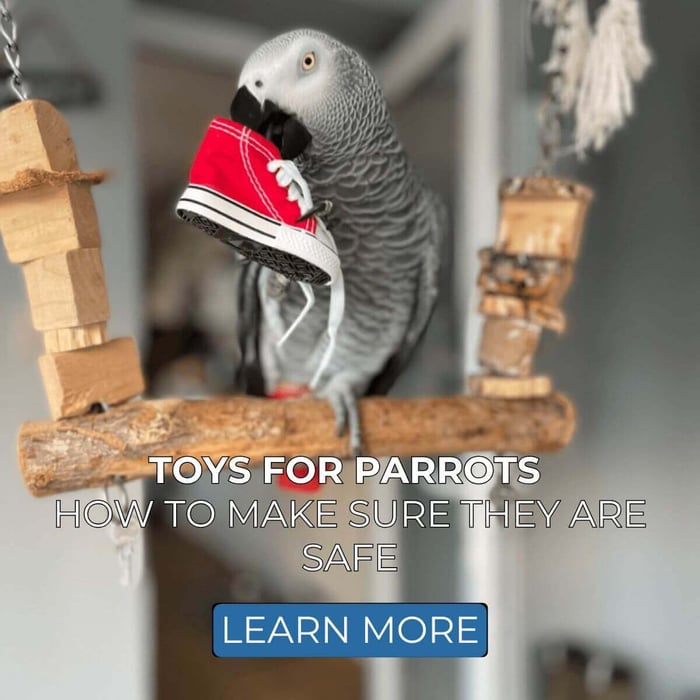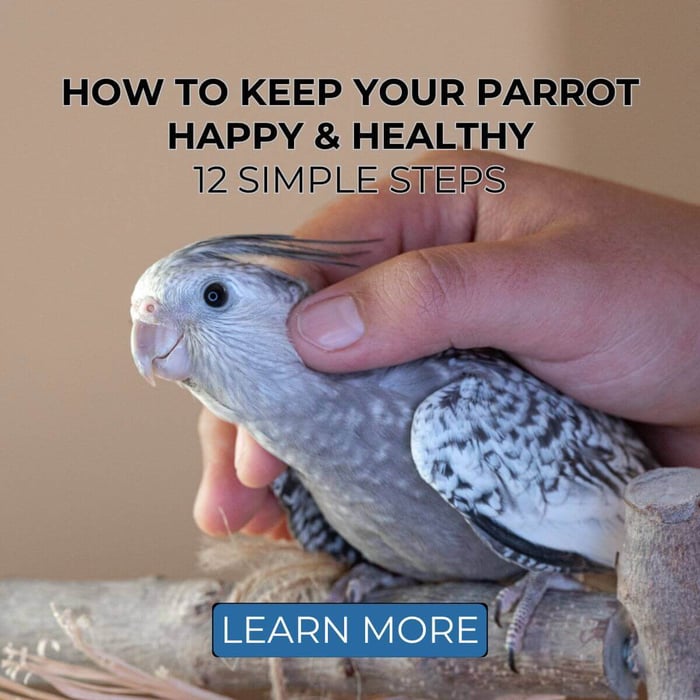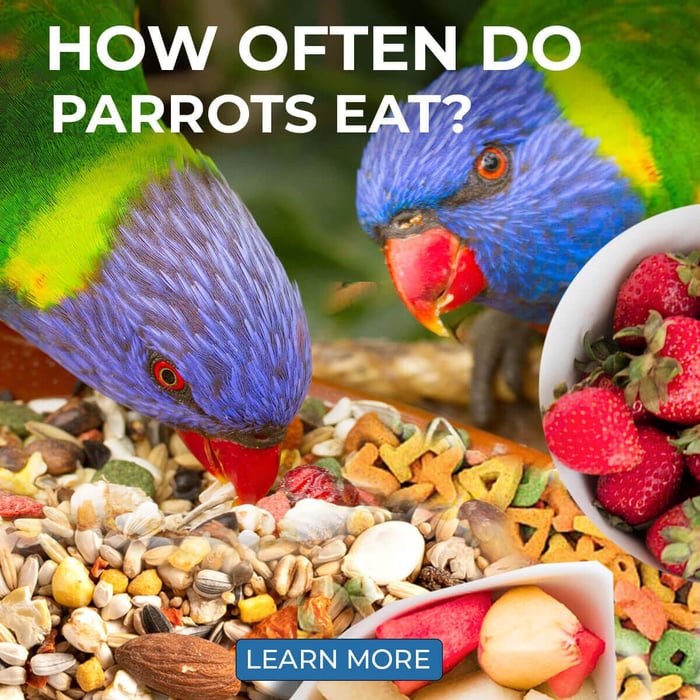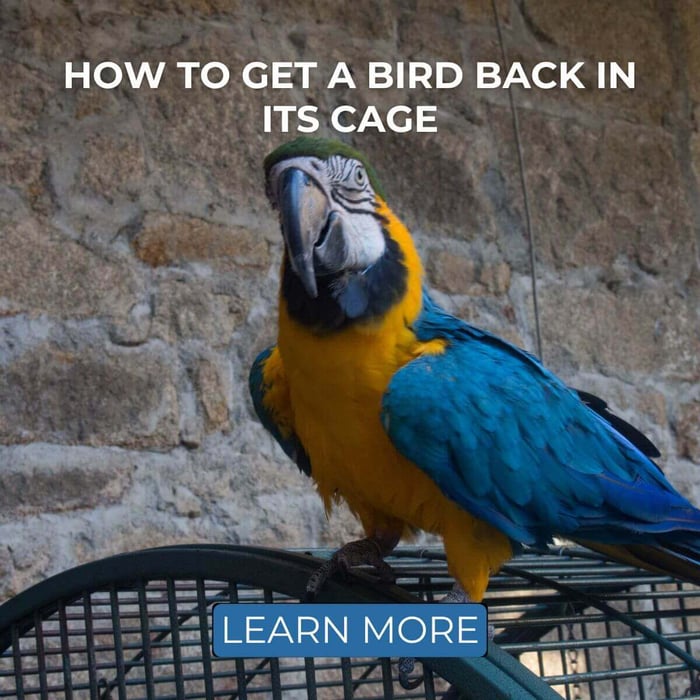Parrot Enrichment – What it is and Why You Should
Parrot enrichment for pet parrots and positive reinforcement techniques are two recent concepts that dramatically improve the life quality of captive psittiscene be they tiny budgerigar or magnificent military macaw. I hope to write later on about Positive Reinforcement training; for now, let’s concentrate on the whys and wherefores of parrot enrichment.
Watch an active bird playing on top of its cage, play station or Java tree ripping something to shreds. The parrot’s innate destructiveness is not being displayed just to annoy you; this is an expression of natural parrot behaviour. Once you understand that, it becomes easier to forgive the eternal messiness of our birds.
But Why Parrot Enrichment?
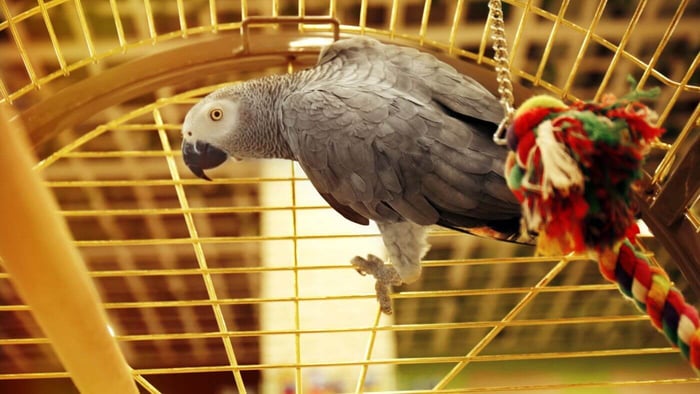
Why not just keep the bird in a nice clean cage with adequate food and water – maybe even a toy or two inside? Because that sort of life, hygienic and organised as it may appear, is simply unsuitable for a parrot, in fact, for most living creatures. Would you enjoy spending the majority of your time in a barred cell? What happens to parrots in diminished environments is that they either become depressed and non-responsive or develop behaviour problems like screaming, biting, swaying, and feather plucking.
If you have a well-bought-up young parrot, the bird will already have some idea of playing with its clutch mates or human caregiver. Play is so natural for young creatures. Parrots start just after fledging, games like tug-of-war, chasing or taking things apart. Busy beaks belong to happy birds. Play fulfils many functions: a way to explore their world, a way for males to mock fight in preparation for adult courtship. But not all captive birds play easily.
Play may be partially instinctive, but if not learned, young does not come readily. An owner may complain, ‘My parrot won’t touch its toys.’ Or ‘any new object put in the cage will terrify my parrot’ Does this matter? Yes, I think so because a bird that won’t play becomes more prone to pluck, scream, bite or develop phobic behaviours. And the saddest result of all: the apathetic bird that sits on its perch doing nothing. Don’t blame the bird; it hasn’t been given suitable opportunities to behave more constructively.
An experiment in the USA a few years ago, with 16 young, parent-reared Orange-winged Amazons, found that the birds with foraging and enrichment in their cages feather plucked and screamed less than the control group with bare cages. They also found that the feather-plucked group, when they were put into the enriched cages, allowed their feathers to regrow.
Although this experiment showed under controlled conditions that parrot enrichment benefits the caged bird, sensitive owners have long known that an active bird will be less likely to develop plucking, screaming, biting, anxiety or other behavioural problems.
Parrot Enrichment - Toys
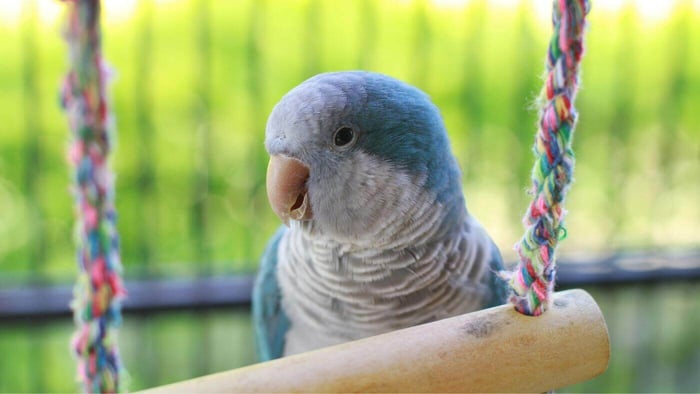
Parrot enrichment items are generally considered to be toys. But also include foraging opportunities and the physical environment. Making your own toys makes good financial sense. And the parrots enjoy helping. When you construct toys in front of them, they’ll try to help by opening jars and boxes. Your flighted parrot will enjoy flying off with your tools – so beware.
Expensive bought items are not necessarily preferred to humble household ones. With ingenuity, you’ll find inexpensive household items for your pet birds everywhere you look – empty kitchen rolls, wooden cooking spoons, plastic plant pots, corks, Christmas cards, and junk mail. If making parrot toys becomes a hobby, you’ll develop a keen eye. Your friends will start to keep their wine corks for you. Keen walkers will bring home fir cones. Beachcombers will pick up driftwood and shells. The list goes to infinity.
There is an almost invisible distinction between foraging activities and playing with objects. The line between foraging, toys, and parrot enrichment becomes blurred. But indoors or outside, the more activities you can facilitate, the greater the benefit for the birds.
Tips for Fearful Birds
Newspaper lining of cage floors brings an added benefit, as birds will scrape at the paper and chew it up. You can then start wrapping treats (a seed, a nut, a toy) in paper. Cardboard foraging toys have been on the market for a couple of years. A good Christmas present for your birds from you (or make your own).
Don’t discard out-of-date phone books or old magazines. Let your bird have them as part of her shredding activity. For small birds, you need to cut them in pieces, but a macaw can play with a full-size phone book for several days; the same applies to boxes and cartons. It doesn’t take long to wrap some corks in paper and hide them in a box slipped into another box. The parrot has to work out where the cork is hidden. This is the same principle as the foraging toys on sale from parrot outlets.
Local Charity Shops
There’s a bonus in patronising local charity shops in the UK or thrift shops in the USA. The charity benefits and your birds enjoy many low-cost objects. Baskets are our best buy. The lady in our local charity shop saves baskets for us, and these make attractive, practical receptacles for toys; they provide hours of chewing until the birds chew through the handle and the basket drops onto the floor.
A word of caution: sharp plastic, and avoid any hint of lead paint. In general, toys safe enough for human kids are safe enough for our kids.
Cardboard Box Dilemma
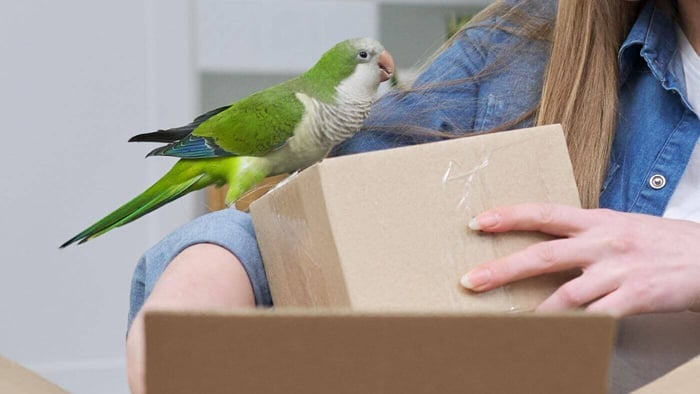
Experts (I often notice) don’t always agree. Should you let your bird have cardboard boxes to hide in or rip them to shreds? It can be argued that this encourages nesting behaviour. But on the other hand, it’s natural for birds to enjoy a hiding place.
Artha Grey is 15 years old now. I’ve allowed her cardboard boxes since she was 14 weeks old. Sadly, she’s never agreed to make a family with Casper Grey, in spite of every encouragement on my part.
Once a fearful bird has progressed to destroying cardboard, you can try wooden toys. With cockatoos or macaws, buying a wooden toy may be too costly. A bored macaw can destroy a wooden ladder in five minutes flat; I’ve seen one do it. A solution here is to find natural tree branches or tie willow strands into bunches.
My birds love flowers. Each has their favourite. With Perdy, it’s roses; with Casper, it’s coriander flowers. Willow wreaths made from twisting fronds of willow onto wire hoops provide several weeks of active foraging play. Imagination and sensible safety rules are the only limits to making parrot toys. It can become a genuinely creative activity.
An Enriched Environment
Ropes are my favourite parrot enrichment, stretched across the ceilings of the rooms my birds are allowed in. Tying fruit to ropes or swings makes the birds super athletic. If ropes across the ceilings look a bit strange when non-parrot-loving visitors arrive, you can slot them onto hooks and remove them in a few seconds. Make sure that branches or natural materials haven’t been sprayed with chemicals. Branches can be washed in a weak (1 to 10 parts dilution) bleach solution, dried naturally or baked in an oven at 180/200 ° for 50/60 minutes.
The Foraging Tree
You can buy Java trees made from that wonderful wood that is almost hard enough for macaws. Then, hang wrapped-up treats and toys from the branches. You can also use a branch anchored in cement or a sand bucket. I’ve used a sturdy metal bucket and a clean tree stem. Sand or cement anchors the tree in the bucket. I tie live branches to dead trees, and the birds rummage amongst the leaves.
Parrot Enrichment - Home Alone
Many pet parrots have to spend a large part of the day with their owners out at work. This is where ingenuity can really help keep your birds happy and content in your absence. Some owners keep the TV on; I prefer Classic FM radio. Casper can whistle several bars of Mozart and also the first two bars of Beethoven’s Fifth. As I can’t put this behaviour on cue, friends have to believe me unless they hang around long enough to hear him; he often whistles out of tune.
Eating – Major Part of Parrot Enrichment
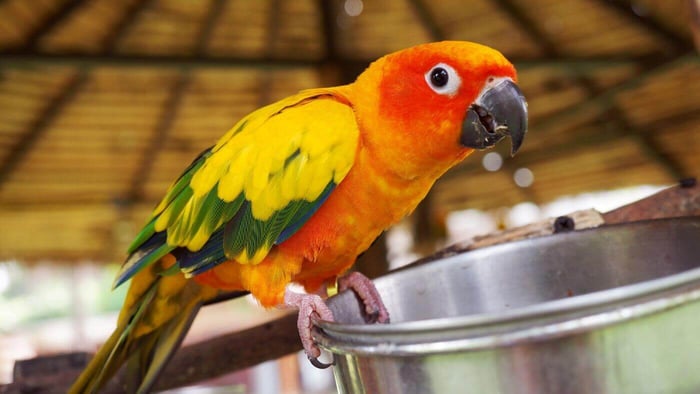
In training your bird, you’re probably using food treats as the primary reinforcement. Using food as part of a parrot enrichment strategy is also successful. Even if birds remain caged for most of the day, serve their food in a manner that makes them work to find it – rather than being delivered like a takeaway. Cover bowls with brown paper, poke a nut through to show the food underneath and let them tear off the paper.
One owner who started wrapping food into tiny parcels and hiding them amongst the leaves of her homemade parrot tree reported how much more willingly the birds ate these items they’d foraged for themselves. Artha and Casper, my Greys, don’t relish fresh veggies. I’ve put spoonfuls in their food bowls to no avail. When I open the cage for our time, both birds fly happily onto the kitchen counter and eat a bunch of spring onions.
Natural Items
A garden provides many parrot enrichment items, as do country or park walks. After tree branches – the most popular items are fir cones (Casper) and rosehips (Artha). Give Perdy LSC a rose to shred, and she’ll be happy. By providing enough interesting and varied foraging and toys, your birds are given choices, and you’ll enjoy the benefits of having more contented companions.
Taking Birds Out
Birds can become bored with the same environment. If you’re lucky enough to have a well-socialised bird, outings make a marvellous parrot enrichment opportunity. Outings with a well-trained bird are great fun. Your presence is the best present you can give your birds. I’m not one of the tiny number of owners who have trained a bird for free flight, which I consider the ultimate parrot enrichment. But I do take mine out wearing harnesses. We also visit parrot people, where birds and humans socialise in their different fashions.
Resources and references
The Parrot Enrichment Activity Book by Kris Porter is only available on the web
Foraging opportunity and increased physical complexity both prevent and reduce psychogenic feather picking by young Amazon parrots by C.L. Meehan, J.R. Millam, J.A. Mench, Applied Animal Behaviour Science 80 (2003) 71–85
To find a great selection of foraging parrot toys, visit Parrot Essentials

